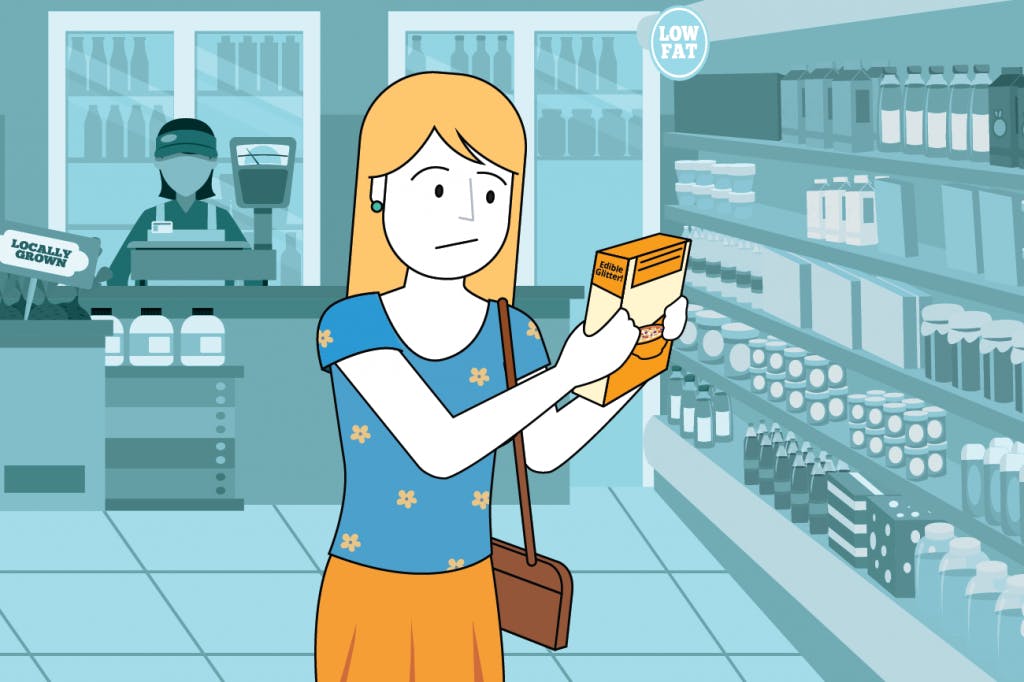Kellogg’s recently released a new cereal called Caticorn.
In case you’re not a nine-year-old, a caticorn is a cross between a cat and a unicorn and is the ultimate in mythical creature cuteness these days. So naturally, they should be made into a cereal.
And not just any cereal, but a cereal that is pink and berry flavored and sprinkled with edible glitter.
Because who doesn’t need a little more glitter at breakfast time? Especially on those days you really don’t want to go to work. If that’s not an innovative way to make someone happy in the morning, I don’t know what is.
Needless to say, it got me thinking about new products. Pink, berry flavored, glitter covered cereal—that’s a little out there. But being “out there” is what gets people’s attention, right? It certainly got mine.
But at what point does a little off-the-wall cross the line into plain wacky? And how long can wacky products really last?
Let’s look at some info on consumer packaged goods (CPG): As shoppers, we buy the same products over and over and over again (about 150 of the same products, according to an article in the Harvard Business Review). That doesn’t bode well for suppliers launching a new product, as it means there seems to be little wiggle room for shoppers to throw a new product into their carts. For suppliers, the article notes, 75 percent won’t hit the $7.5 million mark in their first year of sales. And as the benchmark of what constitutes a “highly successful launch” is $50 million, well…needless to say that falls juuuuuust a little short.1 https://hbr.org/2011/04/why-most-product-launches-fail
Just looking at those two facts alone can have a lot of people about to launch new products biting their nails and looking around worriedly. Add in the fact that you have a “wacky” product—something that some might consider downright weird—and the odds of a successful product launch can shrink even further.
Does that mean that people with oddball ideas should just keep them quiet and leave the marketplace to more staid CPG products?
No! Obviously not, otherwise how boring would that be? Ugh. Grocery shopping would be terrible without any new products to peruse, and we’d all end up bored wandering the aisles, zombie-like, remembering the halcyon days of when new oatmeal flavors were introduced on the regular. And maybe that new flavor wasn’t our preference, but maybe we’d be willing to give it a try once in a while. Because what may seem wacky and weird to one person is innovative and amazing to another. It’s all in the eye—and taste buds, or sense of smell—of the beholder.
But whether or not wacky products take off doesn’t have to be as completely subjective as it might seem. In fact, when done strategically, what might seem like just an oddball, one-off product could actually be a huge boost for companies.
How?
Two words for you: Limited. Edition.
If there is only so much of one product, its rarity can become its greatest strength. People suddenly are clamoring for this product that they otherwise might not have thought twice about, because there are only so many of them in existence.
But! The key to running a successful limited edition campaign for your wacky product is that there has to be a strategy behind it.2 https://luthresearch.com/business-needs-limited-edition-strategy/ And that strategy could go in any number of directions—maybe it’s an online only, or in-store only, purchase. Maybe it’s an actual limited quantity of supply. But before you decide which limited-edition road is best, you have to know the customers who actually want it. As Luth Research, a market research firm, notes in an online post, “The concept of limited edition isn’t just product based. Every time a restaurant or cafe announces a daily special that has been popular in the past, it’s, in its own way, boasting a limited edition product. Same thing if a cleaning company creates a huge spring cleaning promotion for the first 50 customers during the start of the new season. It’s all about determining what customers want and tapping into the urgency of that desire.”
So it goes to assume, then, that through research, Kellogg’s felt consumers had an urgent desire for glittery cereal. Who knew? They did, obviously, because they did their research. And that’s the key—there’s a time and a place for wacky products. But if your product is a little “out there” or is so out-of-the-box it’s not even a recognizable shape, then as a supplier you need to be realistic about its prospects, and be realistic about what the product can and can’t do, what it is, and what it isn’t, who it’s for, and who it isn’t for. (And research is what will guide you.)
Let’s be honest, Kellogg’s probably realizes that after the novelty of glitter cereal wears off, all consumers will be left with is residual glitter that will inevitably wind up in their homes (because glitter. gets. everywhere. no matter how hard you try and keep it at bay). So unfortunately (maybe?) for all of us, Caticorn cereal is a limited-time-only product—but it served a purpose for that time. And who knows, maybe if Caticorn cereal is an off-the-charts hit it could become a regular in the Kellogg’s lineup—rather than a product that is here and gone almost as fast as its mythical counterpart.


